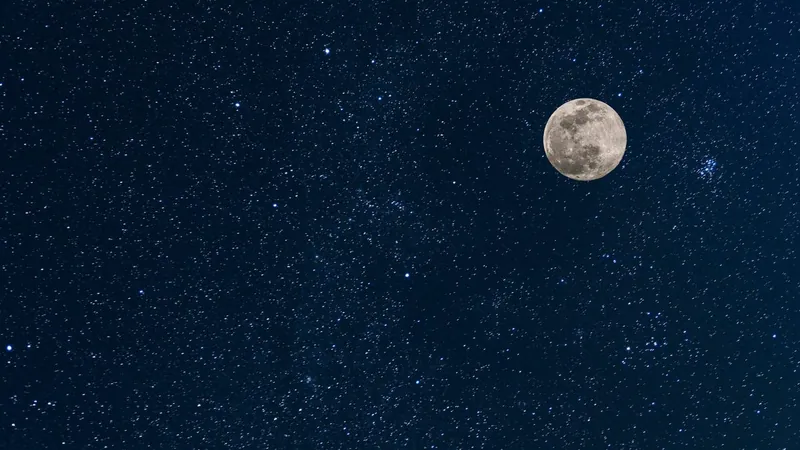
Earth's New Mini-Moon Arrives Today! Everything You Need to Know About Our Latest Cosmic Visitor
2024-09-29
Earth's New Mini-Moon Arrives Today!
Today marks the exciting arrival of a new mini-moon, the size of a city bus, set to grace the skies above us until the week of Thanksgiving. This intriguing cosmic wanderer, named 2024 PT5, is an asteroid that will enter Earth's orbit, remaining nearby from September 29 until November 25, before it ventures back into the depths of our solar system.
The Fascination with Mini-Moons
The phenomenon of mini-moons is fascinating to scientists and astronomers alike. The asteroid was discovered by the ATLAS (Asteroid Terrestrial-impact Last Alert System) team in August, and while they have released preliminary findings in a non-peer-reviewed study, further insights into its nature are eagerly anticipated.
What Are Mini-Moons?
Historically, mini-moons have sometimes turned out to be mere pieces of space debris. For instance, a mini-moon identified in 2020 was later determined to be a rocket booster from the 1966 Surveyor 2 mission. Fortunately, ATLAS indicates that 2024 PT5 is indeed a genuine asteroid—a small, rocky entity that orbits the sun, rather than space junk.
Tracking 2024 PT5
Astrophotographer and amateur astronomer Tony Dunn has created a simulation showing the predicted path of 2024 PT5. This asteroid has been in our vicinity since July and will trace a trajectory that, interestingly, only encompasses about 25% of Earth’s circumference, according to his modeling. While the asteroid’s geocentric energy will be negative for 56.6 days, some astronomers categorize it as a "temporarily captured flyby" due to its incomplete orbit around our planet.
Will You Be Able to See It? Spoiler: Probably Not!
Unfortunately, observers shouldn't get their hopes up regarding a visual encounter with the mini-moon. NASA reports that 2024 PT5 has an absolute magnitude of 27.593, rendering it extremely dim. For context, celestial objects become visible to the naked eye at a magnitude of approximately 6.5, while a high-quality 12-inch telescope can detect up to magnitude 17. To catch a glimpse of 2024 PT5, astronomers would require significantly larger telescopes.
The Rarity of Mini-Moons
Despite the visibility challenges, mini-moons are not as rare as one might expect. They appear almost every year, with recent examples including the 2022 YG asteroid in 2022 and the 2020 CD3 asteroid. Some past mini-moons have even been bright enough for amateur astronomers to observe with standard equipment.
Stay Tuned for More Cosmic Wonders!
As excitement builds around the arrival of 2024 PT5, it’s a stark reminder of how dynamic and ever-changing our universe is. Although we may not see this mini-moon directly, it certainly adds another layer of wonder to our cosmic surroundings. Keep your telescopes ready, because who knows what else might be heading our way in the not-so-distant future!




 Brasil (PT)
Brasil (PT)
 Canada (EN)
Canada (EN)
 Chile (ES)
Chile (ES)
 España (ES)
España (ES)
 France (FR)
France (FR)
 Hong Kong (EN)
Hong Kong (EN)
 Italia (IT)
Italia (IT)
 日本 (JA)
日本 (JA)
 Magyarország (HU)
Magyarország (HU)
 Norge (NO)
Norge (NO)
 Polska (PL)
Polska (PL)
 Schweiz (DE)
Schweiz (DE)
 Singapore (EN)
Singapore (EN)
 Sverige (SV)
Sverige (SV)
 Suomi (FI)
Suomi (FI)
 Türkiye (TR)
Türkiye (TR)